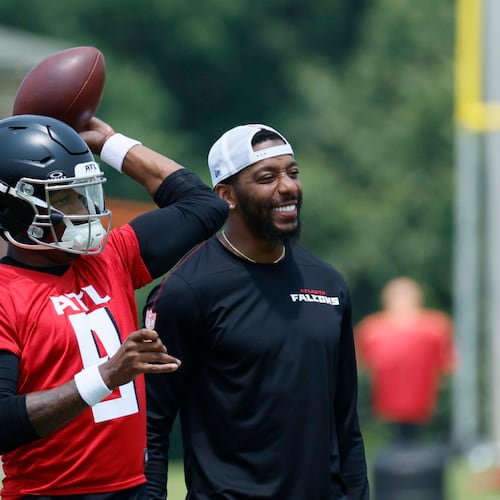Good NFL teams tend to get less good because they get hurt and get old. A bit of both happened with the Falcons — injuries were a major part of the 4-12 season of 2013 — but it would be wrong to ascribe the totality of the team’s slide into sub-mediocrity to infirmity and age. Matt Ryan, who turned 30 in May, hasn’t missed a start since 2009.
What happened with the Falcons the past two seasons was, as befits a franchise where logic has often taken a hike, weird but not weird. From 2008 through 2012, they had five consecutive winning seasons, made the playoffs four times and were twice the NFC’s No. 1 seed. In January 2013, they fell 10 yards short of the Super Bowl. And yet, even as they were compiling the league’s second-best record (trailing only New England) over those five seasons, some in the analytics community insisted they weren’t nearly that good.
Good NFL teams tend to be good for three reasons: They have a stellar quarterback, a sound offensive line and a stout defense. The Falcons possessed only one of the above. As they were going 56-24 over those five seasons, only once did they have a defense that ranked above 16th in a 32-team league. Their offense, while better than their defense, never ranked among the league’s top five in any season. In 2010 they had the NFL’s 16th-best offense and defense … and somehow went 13-3.
In the cold light of hindsight, it’s apparent that Ryan was the rising tide that lifted all boats. Over those five seasons, the Falcons were 29-12 in one-score games. In the NFL, one-score games are essentially a coin flip, which would mean they’re a 50-50 proposition. With this quarterback, they became a 70-30 proposition.
(Over those same five years, the New Orleans Saints — a team with a great quarterback, a somewhat iffy defense and a similar schedule to the Falcons’ — were 20-17 in one-score games. There’s your coin flip.)
We mention this now because the Falcons have a new coach, and not just a new coach: Dan Quinn has also been granted final say over his team’s 53-man roster, which is something Mike Smith didn’t have. With one exhibition game gone, we’ve already seen that some of the players once rated highly by this organization are held in much lesser thrall.
Peter Konz, the Falcons’ top draft choice in 2012 (55th overall) and once their center of the future, was the No. 2 left guard Friday night behind Mike Person, a Rams backup last season. Jon Asamoah, whom Pro Football Focus rated the fourth-best Falcon last season, was the No. 2 right guard behind Chris Chester, recently cut by the Redskins. Levine Toilolo, a starter last season in the absence of Tony Gonzalez, was the third-string tight end. Lamar Holmes, once envisioned as a starting tackle, was listed under “other,” having suffered another foot injury and been placed on the “physically unable to perform” list.
We’ve devoted much verbiage to the holes in the Falcons’ roster — earlier this summer, Pro Football Focus rated it the NFL’s second-worst — but here was the clearest sign yet that, while Thomas Dimitroff might still be the general manager, the guy in charge of setting the 53-man roster mightn’t be so wild about his personnel options. Dimitroff and Smith were a tandem. Quinn could be a one-man band.
Only three of the 16 men drafted by Dimitroff in the first three rounds from 2008-12 project as Falcons starters — Ryan, William Moore and Julio Jones. Only five (Konz and Holmes being the others) remain on the roster. That sobering note makes us wonder, not for the first time, how exactly Smith’s teams won as many games as they did until the winning ceased.
This will sound weird, but it may take a new coaching staff to make sense of the previous seven seasons. It has become apparent that the Falcons won big for five years without being anywhere close to an overpowering team. Were those Falcons undercoached or undermanned? Can Quinn take Smith’s remnants and turn them into something bigger and better? Or will the lack of top-shelf personnel drag down the new coach, same as it did the old one?
About the Author
Keep Reading
The Latest
Featured


